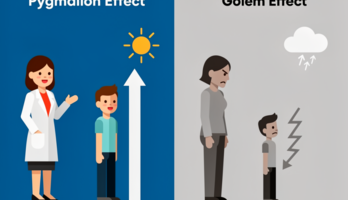first insights into business ocr (835550), страница 8
Текст из файла (страница 8)
Use th e d escription of Bic inexercise 2 to help you.►Grammar Reference page 1585252Company History U1 Pat Woodgate describes the history of the company he works for, ZurichFinancial Services Group. Before you listen, match the words on the leftw ith a definition on the right.1 asset managementЛvaa sum of money is paid to a company totake on a risk for youV b a company gives you financial advice, then2 insurancemanages your possessionsc to join together to form a new company3 re-insurance4 to merged an insurance company buys its owninsurance from other insurance companies,to share the risk of loss2!r a l 5.6a Listen to the first part of the talk and answer the questions.1 Which two things does the presenter talk about?2 Complete the sentences.a Pat works in the Loss Control Department of Zurich____________ , partof the Zurich__________________________ Group.b The company deals with the g ____________ &____________ , e.g.local____________ and National Health trusts.3 Where was the company founded?4 In English, what was its original name?3 |SB| s.6b Here are the key dates in the company's history.
Listen to thesecond part of the talk and match each event to the correct date.a 1873b 1875c 1922d 1993e 19981 The company merged with British American Financial Servicesand formed Zurich Financial Services Group._____2 The company obtained a licence to conduct business in otherEuropean countries._____3 The company opened for business in the UK, with headquartersin London._____4 The company started business and provided re-insurance.5 The company took over the business of MunicipalMutual Insurance (MMI)._____4 Complete the missing inform ation.Employees:Customers:Countries:Company status:The group has 1employees.The group has over 2customers.The group operates in 3countries.One of the ten largest companies which offer45353u n it fiveBusinessCom m unicationCompany presentation1 Work in two groups andprepare a presentation.GROUP A_________You represent Bic, and are preparinga presentation on the history of thecompany to give to a group ofuniversity graduates.
Use the notesfrom the Reading (page 50) and theinformation below to prepare yourpresentation.___________ GROUP В___________You represent EMI and are preparinga presentation on the history of thecompany to give to a group ofuniversity graduates. Use the notesfrom the Writing (page 52) and theinformation below to prepare yourpresentation.IntroductionIn the introduction you should tell your audience what you are going to say.Use the sequencing words you practised in the Writing section to explain thesequence.'Firstly I'm going to talk to you today about the key developments in thehistory of the company I work for and th e n tell you about the company'scurrent position.'Main Body of the PresentationNow prepare the body of the presentation.
Don't write the presentation, butmake notes to help you remember what you want to say. Use the language inthe box to tell the listener about the sequence of events.There are (six) key dates in the company's history ...Firstly, in 1950 ...After t h a t ...Is that clear?Lastly ...Now the company is a leader in the field o f ...Are there any questions?Thank you very much.5454Company History U2Work in pairs, one from Group A and one from Group B.Student A: Give your presentation to your partner who is a graduate at a localuniversity. Be enthusiastic about your company - you want to impress yourpartner!Student B: Ask Student A questions at the end of the presentation.
Discuss thestrengths and weaknesses of the presentation. Ask yourself these questions:• How clear was the message? Was it easy to follow?• How fluent was your partner?Did he/she speak w ithout many hesitations?• How accurate was your partner?Did he/she make many mistakes?• How confident was your partner?Now change roles. Student B: Give your presentation to Student A.Student A: Listen, ask questions and comment on the presentation.Final TaskChoose one o f the companies you have studied so far.MARKS & SPENCER7 fteem i Cjr o u pW rite a short summary o f the history o f the company. Be careful w ith pasttense verbs and remember to use sequencing words to help your reader.Checklist for U nit 5:] 1 W h a t do yo u k n o w a b o u t Ford?J2 W h a t is th e past tense of: make, develop, build, sell, go?] 3 Nam e th re e Bic p ro du cts.I| 4 H ow d o yo u p ro n o u n c e these re g u la r past tense verbs?a stoppedb workedc openedd form ede startedf ended] 5 Describe tw o key events in th e co m p a n y h is to ry o f Z urich FinancialServices G roup.5555unit6RetailingIn this unit:•Language FocusDefinite, indefinite, zero articlesDefining relative clausesPronunciation: /бэ/ /di:/•SkillsWriting: expanding notesReading: bar codesListening: shopping at IKEA• VocabularyWord groups•Key VocabularyLead-inBusiness C om m un ica tionTelephoning^6.1 Retailing is the provision of goods or services to the customer.R etailers buy goods directly from the m a n u fa c tu re r or from a w h o lesaler,(the 'm iddlem an'), and make their income from the m a rg in , or difference,between the price they pay fo r the goods and the price they sell the goods at tothe consum er.
A re ta il o u tle t is the place where customers can purchasegoods, for example, a s u p e rm a rk e t or a d e p a rtm e n t store. Nowadays, manycustomers are shopping from home: shopping by th e In te rn e t, T V shoppingchannels or m a il-o rd e r catalogues is becoming very popular.1 Work in pairs. Look at the bar chart w hichshows reasons w hy people d on 't like shopping.Discuss these questions.1 What are the two main reasons people don'tlike shopping?2 What can retailers do about these twoproblems in your opinion?2Do you like shopping?3 W hat do you th in k about catalogueshopping, Internet shopping and 24 hourshopping?56RetailingVocabulary One■Word groups: Retail Sales1 The consumer often buys a product or service from a retail outlet.Match the types o f retail outlet w ith the correct definition.RETAIL OUTLETDEFINITIONT supermarket2 hypermarketone of a group of shops owned by the samecompany3 shopping centre/malla large shop with many departments or sections each department sells a different type of goods4 department store £a large self-service shop selling food and drink andalso small household items5 specialist retailera covered area with shops, supermarkets andrestaurants6 chain storea shop which only sells one type of product,usually of high quality2Two branches o f a ch a in storea very large supermarket often located on the edgeof a town or cityWork in groups and discuss retailing in your country.1 Do the types of retail outlet above exist in your country?Can you name a well-known shop/outlet in each category?2 Which shops are popular with local people and which are more popular withtourists?3 Which shops have a reputation for quality? for reasonable prices? forexclusive or upmarket products?3 Now ask which retail outlets students in your group buy the follow inggoods from:fooddrinkjewellerystereo equipmentcomputersclothesDirect Sales4 Other methods of selling are d irect and do not use retail outlets.Match a definition to each example o f direct sales.DIRECT SALESDEFINITION1 mail ordera customers can buy from the manufacturer'swarehouse2 door-to-door sales3 TV sales4 The Internet(e-commerce)5 cash and carryb a company sends goods by post from its warehouseV\c customers see product adverts on the screen andplace their orders by phone/fax/the Internet^d an agent for the company sells the product orservice to the customer at homee electronic shopping from companies' websites5757u n it sixCross-culturalCom parisonBritish people now spend £6.52 b illio n per year buying goods through m a ilorder catalogues, direct selling, TV shopping channels and the Internet.Work in pairs and discuss these questions.1 Do people in your country shop from home?2 What effect does home shopping have on shops?3 Do many people use the Internet to shop in your country? W hy/W hy not?Countable and uncountable nounsLanguageFocus One1 W hich o f these nouns are countable and w hich are uncountable?1 consumer(s)5 entertainment2 product(s)6 protection3 computer(s)7 shopping4 information8 advice9 shop(s)Articles an, the and zero article (0 )2 Notice the nouns in b o ld in these sentences.COUNTABLEa He works in a shop (singular).
The shop (singular noun already referred to) iscalled Xanadu.b Many of the shops (plural noun, specific) on Fifth Avenue in New York aredepartment stores.Shops (plural, general) like this one are becoming out of date.UNCOUNTABLEc You can find in form a tion (singidar, general) about this on the Internet.d A good source of in form a tion (singular, general) is the World Wide Web.e The in form a tion (singidar, we know which inform ation) is on the company'swebsite.N O TE : w e c a n n o t say o n in fo r m e ttk m , b u t w e can say a p ie c e o f in f o r m a t io n , o r a s o u rc e o fin f o r m a t io n .Which article (the, a, an 0 ) do we use:1 with single countable nouns referred to for the first time?2 with plural countable nouns referred to for the first time?3 with uncountable nouns?4 when we refer to something already referred to or understood?►Pronunciation1G ra m m a r R eference p ag e 1 5 96.2 Listen to these sentences.
















